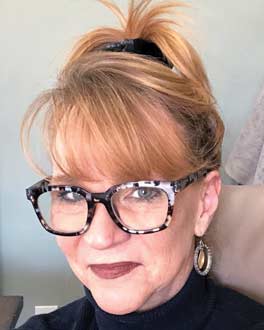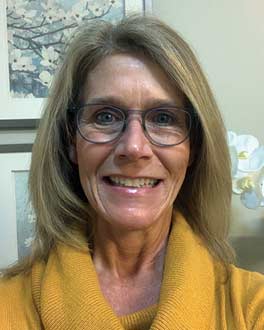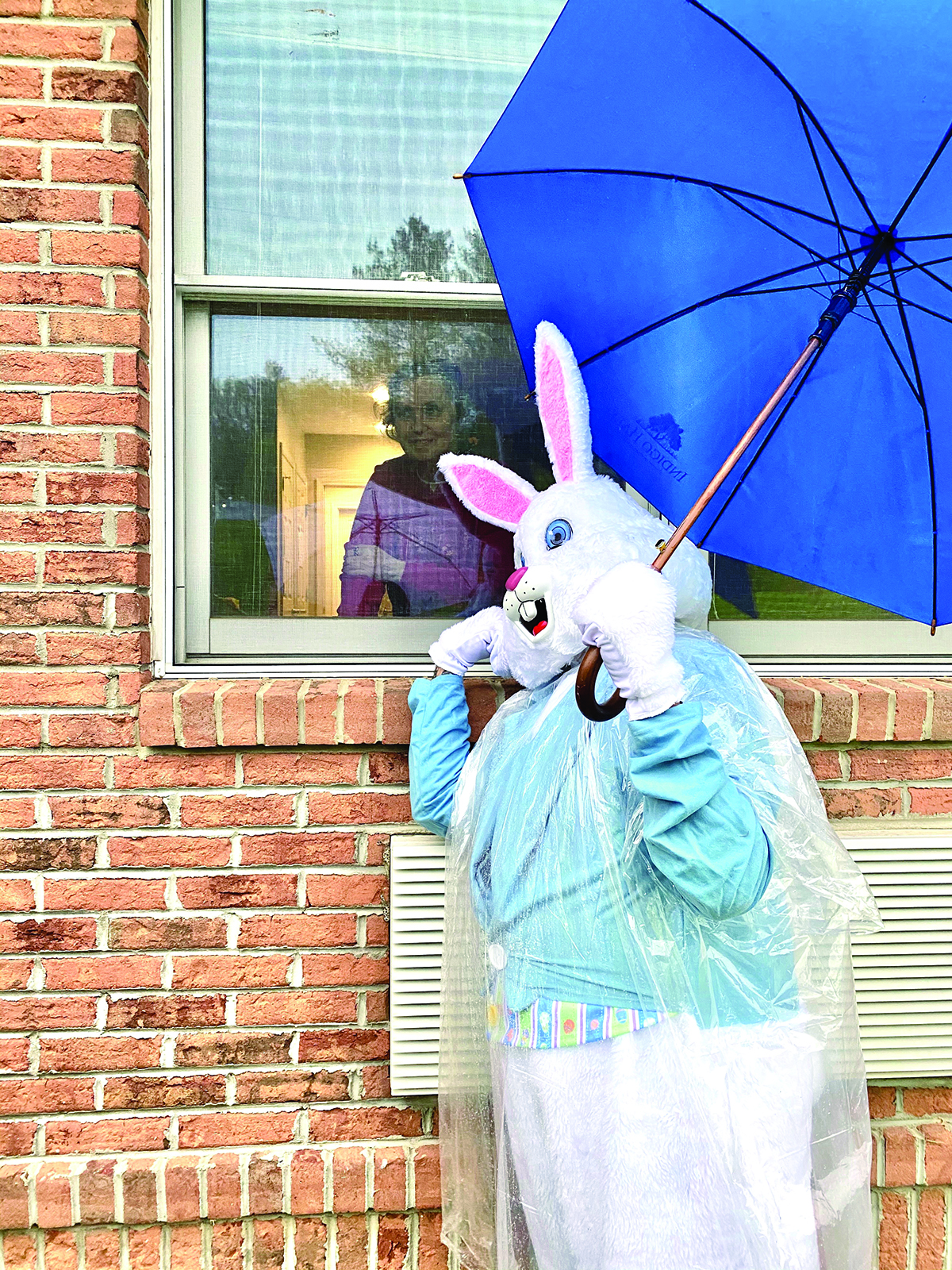Long term/post-acute care is a “relationship” business, says Stacy Hejda, vice president of regulatory compliance for Assisted Living Partners. “The pandemic took away what we were used to—the handshakes, hugs, and visits—and how we thought about marketing,” she says. “We were stunned for a minute, but we embraced a virtual means to reach people.”
Marketing in the post-pandemic may get back some of the hugs and handshakes and a lot of the visits, but virtual connection and other innovations embraced in the past year are here to stay. The result will be stronger, more flexible, and more creative ways to attract new residents and referrals.
 “The human element that we always sold ourselves on and took pride in was suddenly on hold,” agrees James Harvey, vice president of marketing and communication at ALG Senior in Hickory, N.C. Fortunately, he says, “Before COVID, we had started to build digital platforms and train and educate our teams to utilize them effectively.”
“The human element that we always sold ourselves on and took pride in was suddenly on hold,” agrees James Harvey, vice president of marketing and communication at ALG Senior in Hickory, N.C. Fortunately, he says, “Before COVID, we had started to build digital platforms and train and educate our teams to utilize them effectively.”
Occupancy Drops, Creativity Soars
There is no question that occupancy in nursing homes and assisted living facilities took a hit during the pandemic. According to one source (https://skillednursingnews.com/2021/01/48-states-saw-nursing-home-occupancy-of-80-or-worse-as-2021-dawned-with-census-as-low-as-56/), of the 48 continental U.S. states, none reported occupancy higher than 80 percent in the past year, with some as low as 56 percent. Assisted living didn’t fare much better. Average assisted living occupancy dropped 1.2 percent to 77.7 percent in the fourth quarter of 2020.
Communication is King
“During the pandemic, communication became king as our industry was thrust into the spotlight. We needed a way to maintain contact with the outside world,” says Harvey. Skype, FaceTime, Zoom, and other video conferencing took center stage and became a lifeline for facilities to communicate with residents’ family members, as well as prospects and others.
“We also took to social media to make the general public aware of what was happening so that they could have a trusted source of information,” Harvey says. “We embraced virtual means quickly to get and keep people engaged.”
ALG Senior published infection rates and communicated virtually with residents, families, staff, and others about the facility’s infection control processes and other updates.
“This helped create feelings of trust and comfort in our communities,” Harvey says. “Facebook has been incredible. We saw a big uptick in engagement. Consumers have come to expect to see this used for education but also to see what is happening in the community day to day.”
 “The pandemic has accelerated the adoption of multi-channel, open communication in our sector,” observes CC Andrews, president and chief strategist of Quantum Age Collaborative. “We’re using new platforms and old ones in new ways. Virtual meeting platforms like Zoom and FaceTime have been a lifeline to keep our residents connected with their families, physicians, and other supports,” she says.
“The pandemic has accelerated the adoption of multi-channel, open communication in our sector,” observes CC Andrews, president and chief strategist of Quantum Age Collaborative. “We’re using new platforms and old ones in new ways. Virtual meeting platforms like Zoom and FaceTime have been a lifeline to keep our residents connected with their families, physicians, and other supports,” she says.
“Our use of social media blossomed, as we found it extremely useful in keeping families in touch with what was happening within our communities and how we were adapting to keep residents happy, healthy, and engaged.”
Quantum Age’s websites offered educational information, status updates, and virtual visit signup—often in near real time.
“This level of open communication over multiple channels will remain with us,” Andrews predicts. “Moving forward, it will continue to be about personalized, open communication—answering every question with authenticity so that we give every stakeholder—referrer, patient, family member, team member—the information they need to feel confident about their care decisions.”
Virtual Tours, Real-Time Interactions
Virtual tours became the norm in the sector quickly, but to be effective, they had to include the personal element that made in-person visits such a powerful marketing tool.
“For us, we used virtual tours to bring back that human element during the pandemic,” Harvey says. “We had department directors conduct these tours and introduce and engage other team members along the way.”
At the same time, some communities produced videos showing resident activities and introducing teams, and they posted them online. “We made sure our tours and videos were robust and team-centered. They have been a valuable way to show who we are and what we do,” he says.
While communities were able to embrace virtual tours and visits and make the most of these opportunities, Harvey says, “Nothing can take the place of face-to-face interactions, but digital is here to stay. Our rebound has been strong because of the digital process.”
Looking forward, expect to see more hybrid efforts and ongoing and innovative ways to engage prospects and families both in person and digitally.
Media Issues
While media coverage of the pandemic in long term/post-acute care (LT/PAC) admittedly often took a negative tone, avoiding or ignoring reporters isn’t the answer moving forward. Harvey explains that his team has taken a positive approach to media relations.
“We took advantage of any media opportunities that came our way. We saw this as a chance to educate people about assisted living, what kind of care we provide, and how we work to protect our residents and maximize their quality of life,” he says. As a result, ALG Senior saw an “evolution” in reporters’ perspectives. “We were able to change people’s minds,” he says.
It’s important to understand where reporters are coming from, Harvey says.
“It’s challenging to have to navigate an industry or issue you’re not familiar with. We welcomed questions and the opportunity to provide education and insights. We were able to work with journalists and bring them virtually into our communities,” he says.
“We always want to share our perspective with the public. We need to be part of this conversation.”
The relationships established during the pandemic are now paying dividends. As Harvey says, “We have reporters reaching out to us for stories about vaccines, family reunions, and other positive events. COVID has provided us with more opportunities than ever to be taken seriously and to be seen as health care leaders.”
Moving Past COVID
Moving into the post-pandemic world, it may be tempting to put COVID-19 and everything related to it in the past. However, issues such as safety, cleanliness, and infection prevention remain on everyone’s minds.
“We’d be kidding ourselves to think COVID will be in the rearview any time soon, to the extent that it won’t be an important topic for referral sources, prospective residents, and families,” says Andrews. “As a daughter of an assisted living resident, I want to know about precautions being taken, the percentage of vaccinated staff and residents, and what the plan is should there be another outbreak.”
It’s definitely not too early to talk about what the facility did during the pandemic to protect residents, such as implementing separate wings with separate HVAC systems, touchless faucets and other technology, and cleaning systems and processes that are safe and effective.
Hejda of Assisted Living Partners suggests that different audiences may want different information. “When you look at demographics, people in the 80-plus group want ‘safety-first’ knowledge. They’re still conscious of it because it hit them the hardest. Younger people, on the other hand, are more likely to want to move past it.”
She adds, “We tackled it head-on.” This means providing information about vaccines, illnesses, and what is being done to maximize safety. “Potential residents want to know what will happen to them if they move in. Will they be quarantined? Will they be able to visit with family members? What will their ‘new normal’ look like? We need to create a picture of what this new normal will look like, but we also need to address what will happen if the COVID positivity rate goes up.”
In the end, Hejda says, “No matter what age you are, people want to go back to being with family. A lot of seniors feel like they’ve been robbed of a year of their life. The buildings I work with recognize that and are trying to give residents back that year.”
Engaging Ambassadors
During the pandemic, walls were broken down. Existing relationships were strengthened, and new ones were forged in the community. These can be important marketing partners moving forward, says Hejda. “This is a matter of small steps and making sure all parties are comfortable getting back into the community.”
For example, she says, one building is talking with local schools about arranging music or sporting events that residents can enjoy in smaller, more physically distanced audiences. “Staff have done a great job of rolling up their sleeves, and we need to recognize this and continue to present opportunities for them to be involved.”
Elsewhere, Hejda adds, “We were able to utilize everyone in the community to be part of the communication process. All of a sudden, everyone in the community became ambassadors, reaching out to the broader community and engaging people in different ways.”
When asking teams to advocate for the community, management has to invest in them. “Make sure teams have the opportunity to tell their stories,” Hejda says. “We have office hours every week so people can share their ideas, ask questions, etc. We invest in our people so they can represent themselves the best they can with support from us.”
It also will be important to focus efforts on referring physicians, Andrews says. “Spend time ensuring that they know your clinical expertise, capabilities and services, and what you’re doing to keep residents safe and prevent avoidable readmissions.”
 Of course, Hejda says, don’t forget that the buildings themselves are ambassadors of sorts.
Of course, Hejda says, don’t forget that the buildings themselves are ambassadors of sorts.
“Look around for opportunities to do some ‘spring cleaning.’ We are so used to not having people come in, and we have to make sure that our buildings not only are clean and safe but also welcoming and warm.”
For instance, she notes that furniture may not be displayed in an appealing manner or in a way that is conducive to socialization and engagements. At the same time, staff may have been wearing jeans and other more casual clothes during the pandemic instead of uniforms, work attire, and name badges or IDs. “Let’s look around and do some cleaning and start preparing for more visits,” Hejda says.
Skilled Care at Home: What’s the Strategy?
During the pandemic, elective procedures such as hip and knee replacements were cancelled or postponed. As a result, assisted living communities and nursing homes saw a significant drop in short-term admissions. In recent months, as the procedures resumed, there’s been a trend of sending patients directly home—the least intensive setting for care—after a hospital stay for surgery or illness.
 To this, Andrews suggests that referral patterns established during the past year are unlikely to revert to pre-COVID conditions. This means there is an important role for marketing to play. Remind hospital discharge planners, referring physicians, and patients alike of the benefits of rehabilitating in the post-acute care setting, she says.
To this, Andrews suggests that referral patterns established during the past year are unlikely to revert to pre-COVID conditions. This means there is an important role for marketing to play. Remind hospital discharge planners, referring physicians, and patients alike of the benefits of rehabilitating in the post-acute care setting, she says.
It doesn’t have to be expensive to reach out to patients and families in the community. “Many buildings I work with did things like inviting people from the community in for meals, when that was safe and possible, or taking meals out to them,” says Hejda. “We’re seeing more of an effort to get out for more face-to-face interactions with people in the community at large.”
For instance, she says, one building delivered May Day baskets to people. As vaccinations are more widespread and infection rates reach new lows, there likely will be more of such efforts, particularly aimed at people who are doing all right in their homes but would flourish in an assisted living or other LT/PAC setting.
At the same time, some organizations are promoting in-home skilled care services, competing with home care agencies. Andrews suggests that this may be a practical move for those that have the business model, resources, and staffing to provide such care and services.
After all, about one in four home health patients is over age 85, and many have acuity that matches skilled nursing and assisted living residents. Nearly half have five or more chronic conditions, including asthma, arthritis, diabetes, and/or heart disease (https://homehealthcarenews.com/2021/01/top-home-health-trends-for-2021/).
The Significance of a Smile
“The biggest thing we learned about marketing this past year is that regular, robust communication and transparency are essential. We learned that we can’t sugarcoat or spin things,” says Harvey. “You have to keep the curtain pulled back. It sounds simple, but it is the greatest thing you can do.”
Like so many who work in and love LT/PAC communities, Hejda is optimistic about the future. “I think the past year has helped us be grateful for the little things. We all have come to appreciate the value of something as simple as a smile, because we haven’t seen smiles for so long.”
Joanne Kaldy is a freelance writer and communications consultant based in Harrisburg, Pa.